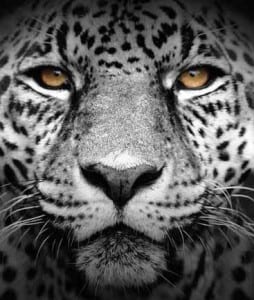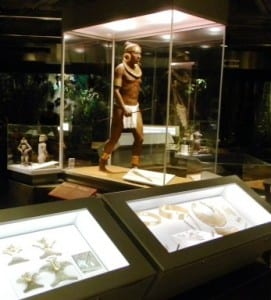Tripatini
the world's smartest travel social network
Good as Gold at San José Museum
A fun outing in the center of San Jose is to go to the Gold Museum, now called the Central Bank Museum, below the Plaza de la Cultura.
It had been years since I had visited the museum, but it remains still one of the highlights of touring Costa Rica’s capitol city. Located conveniently under the Plaza de la Cultura’s east end, just behind the National Theatre and the Grand Hotel, the museum is a cool refuge of culture in a concrete jungle.This year celebrates the 30th anniversary of the museum. In honor, one of Costa Rica’s most noted wildlife species is featured in a phenomenal temporary exhibit called “Felines in the Archaeology of Costa Rica.” 
The country’s six species of wild cats – jaguar, puma, ocelot, margay, jaguarundi and tigrillo -- are represented in 50 objects of stone, gold and ceramic, showing off the crafts and cultural traditions of the area’s native peoples from 300 B.C.E. to 1500 C.E. The exhibit is very interactive, featuring real-life photos of the different cats, a video on wildcat protection and preservation, and even native Boruca balsa wood “cat masks” to try on and have your picture taken! Thankfully, all of Costa Rica’s wild cats are protected.
From the “Felines in Archaeology,” you wind downward to the museum’s main feature of Pre-Columbian gold artifacts. I found this area to be really well done with life-size replicas of Pre-Columbian village life and a very informative section explaining step-by-step how these ancient peoples made their astoundingly intricate and detailed gold art … beeswax models and clay molds are the key. This extraordinary collection contains 1,600 pieces of gold dating from 500 to 1,500 B.C.E. You’ll learn not only how they made their art, but why and its symbolism relating to their daily life, culture and spiritual beliefs. 
On the museum’s upper floor, near the entrance, is a regular Numismatic (currency and mediums of exchange) Exhibit. See ancient coins from Greece, Rome and Asia Minor; learn what Costa Rica’s first peoples used as currency, and then the evolution of the country’s bills and coins from 1502 to the present.
Most interesting to me in this section is the temporary exhibit entitled “Plants and Animals in Costa Rican Numismatics.” What do laurel leaves represent on money? Oak leaves? Myrtle? Costa Rica’s silk cotton tree – also known as “Ceiba”? Learn all of this and more. For instance, what plants and animals are represented on the back of the 5,000 colon note, and why? See how Costa Rica’s national symbols were depicted through time on bills and coins, such as coffee, date palms, sugar cane, the purple orchid (national flower), Guanacaste trees, and the animals jaguar, giant anteater and green turtles.
Be sure to finish off your visit with a stop by the gift shop. There is a great selection of art, photography and nature/wildlife books, plus jewelry and souvenir T-shirts and postcards. Best of all is the collection of indigenous crafts featuring loom-woven items and excellently crafted balsa wood masks from the Boruca village.
The Central Bank Museum is open daily from 9:00 am to 4:30 pm. Entrance is free for Costa Ricans and legal residents every Wednesday and the first Sunday of each month. Guided tours in Spanish, English and French can be reserved by calling (506) 2243-4208.
Now that you’ve had your fill of culture, what to do about filling your belly? Answer: The Patio at Hotel Balmoral, only 150m east of the Gold Museum and Plaza de la Cultura along the pedestrian Avenida Central. Excellent menu selections, especially the grilled Mahi-Mahi … and the desserts, oh my!
After you’ve sated your hunger and thirst, where to relax and rest? Hotel Ritzli is your answer. Just a few blocks away on Calle Central between Avenidas 8 and 10, this cheery European-style pension is just your ticket.
By Shannon
Videos
Groups
-
India
173 members
-
Tour Operators
873 members
-
Ireland
93 members
-
South Dakota
17 members
-
Azerbaijan
17 members
-
Shopping the World
55 members
-
Tech for Travel/Hospital…
87 members
-
Andorra
26 members
-
Online Corner
75 members
-
Minnesota
22 members
-
Backpackers & Hostels
84 members
-
Portugal
60 members
-
Turks and Caicos
26 members
-
Agritourism/Farmstays
72 members
-
Zambia
21 members
© 2025 Created by EnLinea Media.
Powered by
![]()
Badges | Report an Issue | Privacy Policy | Terms of Service
You need to be a member of Tripatini to add comments!
Join Tripatini